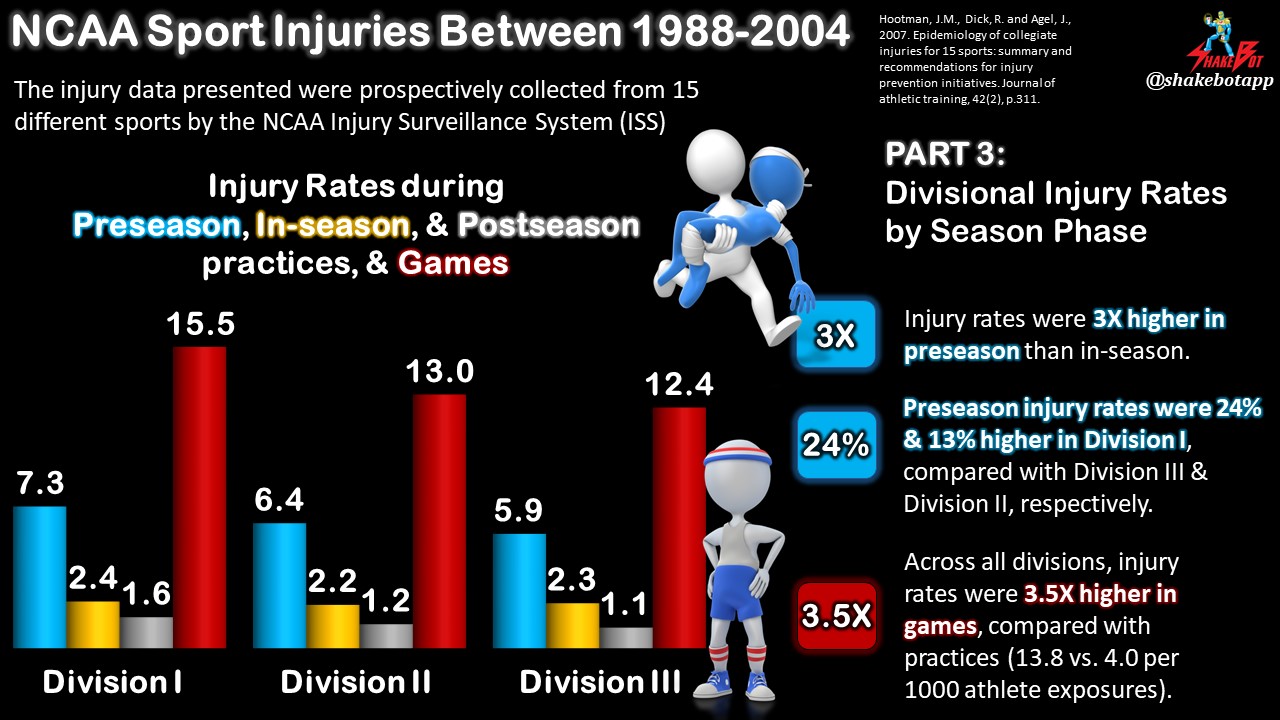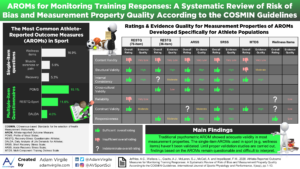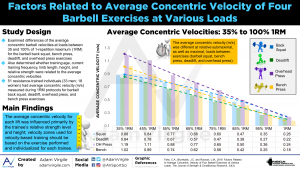Injury and illness can wreak havoc on the body, both physically and mentally. We review how simple monitoring and preparation strategies can reduce time spent on the sidelines.
If you’ve ever been injured, you know how physically and mentally disturbing that can be. People are more prone to injury during periods when the physical work performed is greater than the body is prepared to handle. In particular, training camps and preseasons require multiple long, intense physical activity sessions in succession. It’s important that you understand how you can ensure that you stay healthy, and prevent injuries, during training camp and/or preseason activities.
Abrupt increases in physical activity levels, or “training load”, has been associated with increased injury risk [1-7]. For example, low training loads at the end of pre-season increased injury risk during the season in Australian Rules Football players [8]. This might have been due to the lack of preparedness for the intense in-season physical demands. A NFL team discovered that their injury rates were much higher in weeks 1-2 than weeks 3-5 of their training camps between 1999-2007 [9]. One possible factor contributing to this may be that the athletes were underprepared for the grueling demands of camp. Sixteen years of NCAA injury data (1988-2004) shows that preseason injury rates were higher than inseason and postseason injury rates. The authors speculate that this could be because “some athletes may come to the preseason poorly conditioned, and, thus, the stress of the high-intensity, high-load preseason training may result in an excess of injuries,” [10].

So, how can you protect yourself? Prepare for the rigorous demands of your training camp or preseason. Build up your physical capabilities, or “training load” prior to training camp or preseason; this will enable you to stay on the field by preparing you for the intense activity requirements [4, 5, 7, 11]. In fact, a recent review looked at 49 studies comparing cardiorespiratory fitness level and injury risk in military personnel. The researchers found that military trainees with higher fitness levels had lower injury risks during military basic training (i.e. military “training camp”), [12].
ShakeBot Bottom Line
-
When you know a difficult event like training camp or preseason is coming up, prepare yourself for this rigorous activity to increase your likelihood of staying injury-free
-
Seek out training advice from strength and conditioning coaches; they can give you expert guidance. If you need help finding appropriate resources, contact us; we’ll get you in contact with the best people we know, and get you moving in the right direction.
-
Make sure to recover between training sessions, after training camp, or after preseason sessions. Begin the process by understanding what your body needs, nutritionally.
Reference
-
Piggott, B., 2008. The relationship between training load and incidence of injury and illness over a pre-season at an Australian Football League club.
-
Rogalski, B., Dawson, B., Heasman, J. and Gabbett, T.J., 2013. Training and game loads and injury risk in elite Australian footballers. Journal of Science and Medicine in Sport, 16(6), pp.499-503.
-
Cross, M.J., Williams, S., Trewartha, G., Kemp, S.P. and Stokes, K.A., 2016. The influence of in-season training loads on injury risk in professional rugby union. International journal of sports physiology and performance, 11(3), pp.350-355.
-
Hulin, B.T., Gabbett, T.J., Blanch, P., Chapman, P., Bailey, D. and Orchard, J.W., 2013. Spikes in acute workload are associated with increased injury risk in elite cricket fast bowlers. Br J Sports Med, pp.bjsports-2013.
-
Hulin, B.T., Gabbett, T.J., Lawson, D.W., Caputi, P. and Sampson, J.A., 2016. The acute: chronic workload ratio predicts injury: high chronic workload may decrease injury risk in elite rugby league players. Br J Sports Med, 50(4), pp.231-236.
-
Ehrmann, F.E., Duncan, C.S., Sindhusake, D., Franzsen, W.N. and Greene, D.A., 2016. GPS and injury prevention in professional soccer. The Journal of Strength & Conditioning Research, 30(2), pp.360-367.
-
Gabbett, T.J. and Domrow, N., 2005. Risk factors for injury in subelite rugby league players. The American Journal of Sports Medicine, 33(3), pp.428-434.
-
Colby, M.J., Dawson, B., Heasman, J., Rogalski, B., Rosenberg, M., Lester, L. and Peeling, P., 2017. Preseason Workload Volume and High-Risk Periods for Noncontact Injury Across Multiple Australian Football League Seasons. The Journal of Strength & Conditioning Research, 31(7), pp.1821-1829.
-
Feeley, B.T., Kennelly, S., Barnes, R.P., Muller, M.S., Kelly, B.T., Rodeo, S.A. and Warren, R.F., 2008. Epidemiology of National Football League training camp injuries from 1998 to 2007. The American journal of sports medicine, 36(8), pp.1597-1603.
-
Hootman, J.M., Dick, R. and Agel, J., 2007. Epidemiology of collegiate injuries for 15 sports: summary and recommendations for injury prevention initiatives. Journal of athletic training, 42(2), p.311.
-
Jones, C.M., Griffiths, P.C. and Mellalieu, S.D., 2017. Training load and fatigue marker associations with injury and illness: a systematic review of longitudinal studies. Sports medicine, 47(5), pp.943-974.
-
Lisman, P.J., Sarah, J., Gribbin, T.C., Jaffin, D.P., Murphy, K. and Deuster, P.A., 2017. A Systematic Review of the Association Between Physical Fitness and Musculoskeletal Injury Risk: Part 1—Cardiorespiratory Endurance. The Journal of Strength & Conditioning Research, 31(6), pp.1744-1757.




